Kengo Kuma's new Folk Art Museum draws on Hangzhou's local vernacular
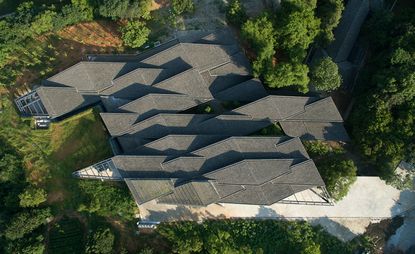
Located in the outskirts of Hangzhou, China's alluring green landscape of rolling hills and peaceful lakes, the dark, subtle, angular shapes of the striking new Folk Art Museum building are the latest addition to the China Academy of Arts grounds, courtesy of Japanese architect Kengo Kuma.
Situated within the renowned school's campus, the project is set to carve meaningful relationships between visitors, displays and their environment. Its low, distinct outline is nestled into the sloped site - formerly a tea field - and resembles a group of gently angled pitched roofs. The arrangement cascades downwards, referencing through its geometry and composition local vernacular and construction techniques.
Indeed, a sense of place and the site were important to this project; the architect was keen to 'design a museum from which the ground below can be felt', keeping the buildings low - they don't exceed two storeys in height. The cascading roof system allows the building to cleverly mitigate the site's irregularities, at the same time creating the appearance of a 'village', explain the architects.
Kuma also worked with rich, local materials, such as cedar and reclaimed roof tiles used to cover old homes in the region, drawing even more parallels between his work and the area's traditional architecture. A stainless wire mesh on the facade, both holds the tiles - which vary in size - together and creates a pleasant screen for the building, which filters light and shadow, and controls views.
The complex's generous museum display areas are complemented by state-of-the-art conference facilities, making the project's total surface reaching almost 5,000 sq m.

Designed by Kengo Kuma, the composition was concieved as a group of gently sloped roofs

When seen from a distance, the complex resembles one of the area's traditional villages
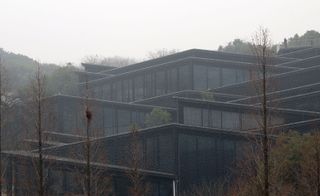
The complex of cascading roofs is kept low to keep a relationship with the ground, explain the architects
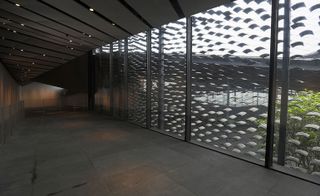
Kuma and his team worked with local material where possible, such as a series of reclaimed roof tiles from old homes from the region
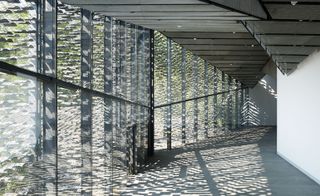
A stainless wire mesh on the façade, holds the tiles together, while creates a pleasant screen, filtering light and views
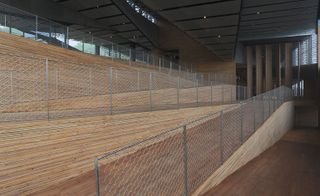
Cedar wood was also extensively used, mostly in the interiors

The museum features several unique display areas...
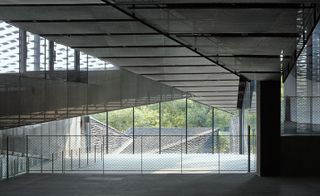
..while it also hosts a state-of-the-art conference hall for the campus
INFORMATION
Photography: Eiichi Kano
Wallpaper* Newsletter
Receive our daily digest of inspiration, escapism and design stories from around the world direct to your inbox
Ellie Stathaki is the Architecture & Environment Director at Wallpaper*. She trained as an architect at the Aristotle University of Thessaloniki in Greece and studied architectural history at the Bartlett in London. Now an established journalist, she has been a member of the Wallpaper* team since 2006, visiting buildings across the globe and interviewing leading architects such as Tadao Ando and Rem Koolhaas. Ellie has also taken part in judging panels, moderated events, curated shows and contributed in books, such as The Contemporary House (Thames & Hudson, 2018), Glenn Sestig Architecture Diary (2020) and House London (2022).
-
 The moments fashion met art at the 60th Venice Biennale
The moments fashion met art at the 60th Venice BiennaleThe best fashion moments at the 2024 Venice Biennale, with happenings from Dior, Golden Goose, Balenciaga, Burberry and more
By Jack Moss Published
-
 Crispin at Studio Voltaire, in Clapham, is a feast for all the senses
Crispin at Studio Voltaire, in Clapham, is a feast for all the sensesNew restaurant Crispin at Studio Voltaire is the latest opening from the brains behind Bistro Freddie and Bar Crispin, with interiors by Jermaine Gallagher
By Billie Brand Published
-
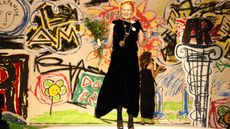 Vivienne Westwood’s personal wardrobe goes up for sale in landmark Christie’s auction
Vivienne Westwood’s personal wardrobe goes up for sale in landmark Christie’s auctionThe proceeds of ’Vivienne Westwood: The Personal Collection’, running this June, will go to the charitable causes she championed during her lifetime
By Jack Moss Published
-
 Beijing City Library is an otherworldly escape from the digital world
Beijing City Library is an otherworldly escape from the digital worldBeijing City Library by Snøhetta is a flowing, welcoming space to share knowledge and socialise
By Tianna Williams Published
-
 Chinese scholar Zhang Taiyan’s house opens as a museum and bookshop in Suzhou
Chinese scholar Zhang Taiyan’s house opens as a museum and bookshop in Suzhou20th-century Chinese scholar Zhang Taiyan’s house in Suzhou has opened to the public as a museum, featuring a bookshop designed by Tsing-Tien Making
By Ellie Stathaki Published
-
 Jiaxing’s sunken train station is a hub of urban greenspace and efficient city links
Jiaxing’s sunken train station is a hub of urban greenspace and efficient city linksJiaxing Train Station by MAD Architects is a bubble of urban green space with a blend of reconstructed historical design and modern minimalism
By Tianna Williams Published
-
 Junya Ishigami’s Zaishui Art Museum in China was conceived as a ‘gentle giant’
Junya Ishigami’s Zaishui Art Museum in China was conceived as a ‘gentle giant’Japanese architect Junya Ishigami completes Zaishui Art Museum, a kilometre-long building positioned in a manmade lake and aiming to ‘bring the outside landscape in’
By Joanna Kawecki Published
-
 Sun Tower, rising on Yantai’s waterfront, wins Best Building Site in the Wallpaper* Design Awards 2024
Sun Tower, rising on Yantai’s waterfront, wins Best Building Site in the Wallpaper* Design Awards 2024We take a tour of the building site at Sun Tower, Open Architecture's new nature-inspired cultural attraction for the seaside town of Yantai in China
By Ellie Stathaki Published
-
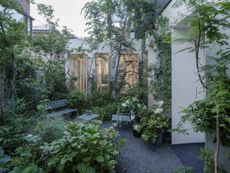 Forest Villa transforms an existing building shell into a minimalist villa engulfed in nature
Forest Villa transforms an existing building shell into a minimalist villa engulfed in natureForest Villa by HAS is a minimalist home in suburban China, crafted in an existing building shell, and working with its idyllic natural context
By Ellie Stathaki Published
-
 Alberni by Kengo Kuma throws shapes in Vancouver
Alberni by Kengo Kuma throws shapes in VancouverAlberni by Kengo Kuma is completed, showing off its highly crafted, wavy volume in Vancouver, Canada
By Ellie Stathaki Published
-
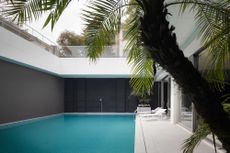 A Chinese island house brings luxury minimalism to seaside living
A Chinese island house brings luxury minimalism to seaside livingL House by AD Architecture is a Chinese island house that bridges luxury minimalism and seaside living
By Ellie Stathaki Published